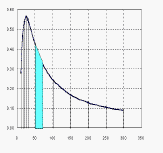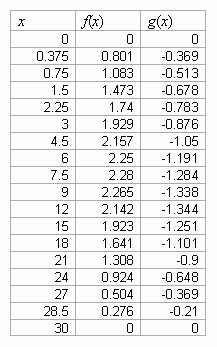

Numerical Methods
for Calculus & DE
 |
MA3457/CS4033 Project # 3: Numerical Integration |
|---|
 Sections B01/B01
Sections B01/B01
 Mon, Tue, Thu, Fri - 2:00 pm
Mon, Tue, Thu, Fri - 2:00 pm| Basics: |
|---|
The purpose of this project is to apply the methods of numerical integration to practical engineering problems.
Methods of numerical integration to be used in the project: Composite Trapezoidal Rule, Composite Simpson Rule, Romberg Integration, and Gaussian Quadratures. Avoid using the MATLAB built-in functions quad and quad8.
| Part 1: |
|---|
Problem 1
Background: The average value of a variable electric current over
one period may be zero. For instance, if the current is described by a simple
sinusoid i(t) =
sin(2 /T), where T is the
period, then the average value of this function can be determined from the
equation:
/T), where T is the
period, then the average value of this function can be determined from the
equation:

Despite the fact that the result is zero, such current is still capable of performing work and, in particular, generating heat. For this reason, in electrical engineering, a variable current is often characterized as the root-mean-square (RMS) value:

where i(t) is the instantaneous current.
Data and Question: For the current with the waveform represented by the expression

determine I

 as a function
of the period for 0.001 < T < 1 s.
as a function
of the period for 0.001 < T < 1 s.
Problem 2
Background: Design of new aircrafts requires knowing the volume occupied by the aircraft's body. Although the geometry of modern flying machines is extensively modeled prior to manufacturing, they also undergo extensive experimental tests in the wind tunnels. As a result from those experiments, the configuration of the fuselage and airfoils may slightly change; at this stage, the volume has to be determined from measurements.
One of the ways to compute the volume is based on preliminary computations of cross-sectional areas which appear to be curvilinear regions bounded by the aircraft's surfaces characterized numerically.
Data: The profile of the airfoil is shown in the following figure:


Question: Calculate the cross-sectional area of this airfoil from this data.
| Part 2: |
|---|
Problem from Your Field
Background, Data, Question
Course Information | Homework Assignments | Mini Projects | Test Preview | Announcements & Hints